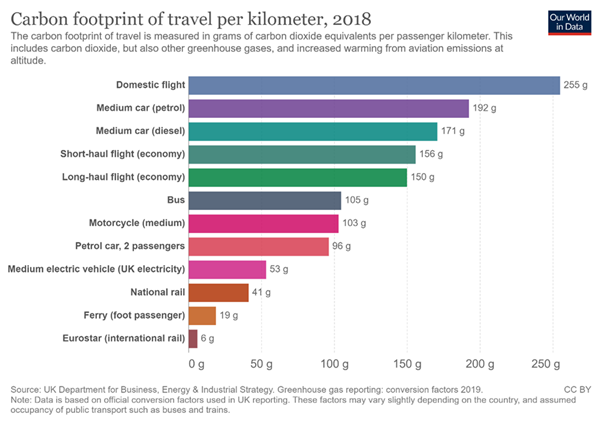Climate Change
Sustainable Woodstock's Frequent Flyer Discounts!
Last week I was privileged to see a copy of a
letter to our MP Robert Courts concerning the government’s complete
blind spot when it comes to dealing with the decarbonisation of air
travel.
Courts, of course, is an aviation
minister, so the letter was directed at precisely the right place.
And it was a brilliant letter!
A letter that left nowhere for Courts
to hide.
I don’t have permission to copy it
here but here are a few nuggets.
For instance, did you
know that over 50% of people never fly anywhere ever.
And just 1% take 20% of all flights,
and 10% take over 50% of all flights.
So that the very heavy costs of
subsidising air travel and the even heavier costs to the environment and
the planet are borne by the majority for the benefit of a very few.
Where’s the justice in that?
The government trumpet
the expected growth in aviation travel with a projected increase of 70 %
between 2018 and 2050 (source, Department for Transport).
Of course, when challenged, the
aviators respond with, “Ah! But we are researching the use of
sustainable fuels.”
So, are we to grow thousands of acres
of bio-fuels at the expense of food crops in a world where food is
already a scarce commodity for many people?
Not much justice there either.
No one is saying that no
one should ever take a flight to the Greek Islands, say, for a well
earned break.
What we are saying is that people
should regard flying as a luxury that is indulged rarely and where we
should expect to pay a fair cost that takes account of all the damaging
effects that aviation incurs.
Government policy should be addressing the need to reduce demand for flights by some or all of the following: -
·
Carbon
pricing such that the environmental costs of aviation are covered by the
industry (who will, of course, pass that on to the customer)
·
“Frequent
Flyers” should pay a substantial surcharge rather than be priviledged
with all sorts of offers and benefits
·
Fuel Duty
must be charged appropriately
·
VAT and air
passenger duty should be chargeable
·
Airport
capacity should be limited to begin the longer term reduction in demand
So how does aviation fit into the emissions
overall.
What follows is taken from the website
https://ourworldindata.org/travel-carbon-footprint#:~:text=Over%20short%20to%20medium%20distances,lowest%20carbon%20way%20to%20travel.
Do
take a look.
Transport accounts for
around one-fifth of global carbon dioxide (CO2) emissions.
In richer countries with populations that travel often – transport can
be one of the largest segments of an individual’s carbon footprint.
So, if you need to travel – either locally or
abroad – what is the lowest carbon way to do so?
In the following chart we see the comparison of
travel modes by their carbon footprint. These are measured by the amount
of greenhouse gases emitted per person to travel one kilometre.

Of course, remember that these figures are
carbon emissions PER KILOMETRE TRAVELLED and since most flights cover
long distances, especially long-haul flights, it is immediately clear
just how dangerous air travel is for climate change and the planet.
This data is sourced
from the UK Government’s methodology
paper for greenhouse gas reporting,
widely used by companies to quantify and report their emissions.
Greenhouse gases are measured in carbon
dioxide equivalents (CO2eq),
meaning they also account for non-CO2 greenhouse gases and
the increased warming effects of aviation emissions at high altitudes.
If you’re interested in your own personal carbon
footprint then remember that there can be wide variations in emissions
depending primarily on a) the length of your trip, b) the source of
electricity in your local grid, c) the occupancy of public transport and
d) in the case of driving — your vehicle and number of passengers.
Over short to medium
distances, walking or cycling are nearly always the lowest carbon way to
travel. While not in the chart, the carbon footprint of cycling one
kilometre is usually in the range of 16 to 50 grams CO2eq per
km depending on how efficiently you cycle and what you eat.
Taking a flight or driving alone are the most
carbon-intensive options. Between the two, which is better depends on
the distance travelled. If you’re travelling moderate distances (<1000
kilometres or a domestic flight within the UK), then flying has a higher
carbon footprint than a medium-sized car. If the distance is longer
(>1000 kilometres or an international flight), then flying would
actually have a slightly lower carbon footprint per kilometre than
driving alone over the same distance.
The carbon intensity of
your local electrical grid matters too. If your electricity is supplied
by nuclear or renewable energy instead of coal, electric vehicles and
electric rail are even more efficient. For example, France has a very
‘green’ electricity mix: more than 90% of its electricity comes
from low-carbon sources –
~70% from
nuclear. If you took
the Eurostar in France instead of a short-haul flight, you’d cut your
journey’s footprint by around 96%.
When driving, your
emissions will depend mainly on which vehicle you use and the number of
passengers. Driving a small Mini car emits 111 g CO2eq per km
while a large 4×4 car emits ~200 gCO2eq per km. Adding one
additional passenger travelling to the same location would halve
emissions per passenger-kilometre.
To tie it together,
let’s say you were to drive from Edinburgh to London (~500km). You’d
emit close to 100 kilograms CO2eq. If you were to fly, this
would increase by almost one-third (128 kg CO2eq). Taking the
train would be 80% lower (21 kg CO2eq).
Some general takeaways on how you can reduce
the carbon footprint of travel:
- Walk, cycle or run
when possible – this comes with many other benefits such as lower
local air
pollution and
better health;
- Trains are nearly always the winning option
over moderate-to-long distances;
- If travelling internationally, going by
train or boat is lower-carbon than flying;
- If travelling domestically, driving – even
if it’s alone – is usually better than flying;
- If it’s a choice between driving or flying
internationally, flying economy class is often better;
- Car-sharing will
massively reduce your footprint – it also helps to reduce local air
pollution and
congestion;
- Electric vehicles are nearly always lower-carbon than petrol or diesel cars, especially in a country that produces much of its electricity by renewables or nuclear.
Colin Carritt - May 2022
And here is a much more graceful and climate friendly aviator:-
The Common Darter Dragon Fly, pictured on a noticeboard in
the woodland and photographed by sharp-eyed SusWoo member Steve Heath
(why on the Climate Change page?
Well it's one of the few pages without many pictures!!)
insert content here
 Sustainable Woodstock
Sustainable Woodstock